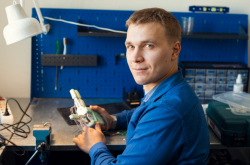How did you get into meteorology?
In tenth grade I won the national geography contest and made up my mind to enroll into a geography program. I was more interested in geology, but in my second year at university I realized that meteorology is even better – you have to know math and physics, there is much to learn, and I could grow there.
Contemporary meteorology makes it possible to apply topical physical and mathematical methods to solving peculiar applied problems.
Did you know from the start that you will be a researcher?
My grandparents worked in this field, so I knew that all the negative stereotypes about scientists being poor or being forced to work on outdated equipment were false.
However, of course, the main thing for me was that I am interested in what I do. I have friends who work at major companies, such as Yandex, and I find the tasks they're working on dreadfully boring. There are much more opportunities for growth in science – and being a researcher you can do something you are passionate about. There is no daily routine or repetitive tasks, you are free to keep trying something new to see what works and what doesn’t. It is understandable that not all commercial companies are ready for such experiments.
Why did you continue your studies at ITMO and not MSU?
It appeared to me that classic meteorology in Russia has somehow stopped in time – mathematical models have been in use since the ‘50s or ‘60s but the new machine learning methods have only just started being implemented in the field. And not everyone has jumped on this bandwagon.
For instance, I worked with models that predict climate change, and one of the key factors in those is the biosphere – forests, fields, etc. In such computations, you have to take into account complex multifactor systems, such as oxygen flows from plants, evaporation, and the spread of heat and gas. The theories at the core of these calculations rely on significant simplifications, so it would’ve been natural to use machine learning trained on huge databases from various research centers.
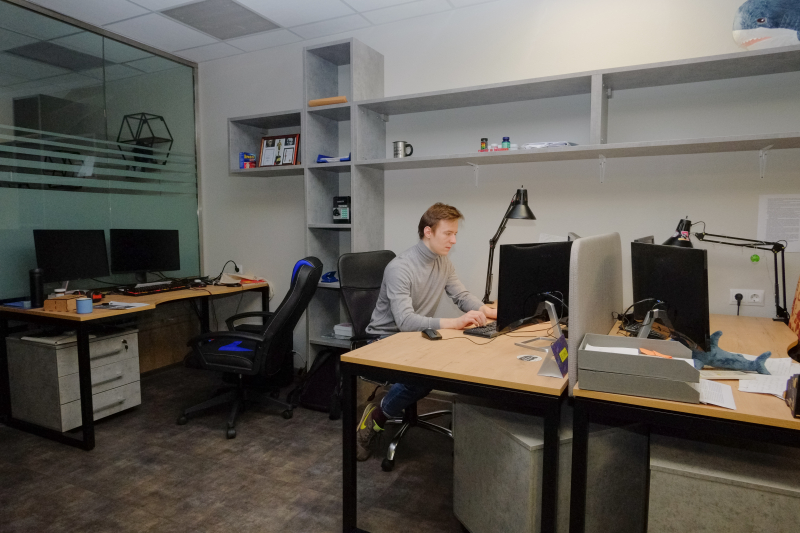
Photo by Ekaterina Shevyreva, ITMO.NEWS
My friend, who is an oceanologist, faced the same problem, he wanted to use machine learning in his research. So together we decided to explore other fields and universities. Back then, ITMO had the Laboratory of Computational Modelling of Natural Systems at the National Center for Cognitive Research, this lab was the first to use machine learning in meteorology. That’s why we thought it could be interesting for us to join this newly founded team of young researchers – which also was a significant advantage for us.
Why is it better to work with young specialists?
They keep track of current trends and easily shift their focus. If you’ve been developing a topic for only a couple of years, it’s easier to admit that your approach is outdated and start working on something new. And if you’ve been doing something for 20-30 years, it’s very hard for you to admit that you’ve lost all this time and start again. Undeniably, there are cases when such experienced researchers did radically change their field of expertise, but they are rather an exception.
Was it hard for you to take a U-turn in your career and switch from geography to IT?
In truth, I didn’t actually change my career, I simply transferred from one related field to another. It might come as a surprise, but as a geographer, you have to do a lot of math and physics, first of all, continuum mechanics. With this training, it wasn’t that hard for me to transfer to machine learning. Usually, not knowing some mathematical foundations can be a challenge, because you need this knowledge to interpret the output you get from a model that’s processed your data.
What do you work with now?
I am engaged in quite a specific field – I select differential equations that would best describe dynamic systems. The ultimate goal of my research is to develop an algorithm that would produce a differential equation based on the data of the system itself, as well as some a priori knowledge of the processes inside it.
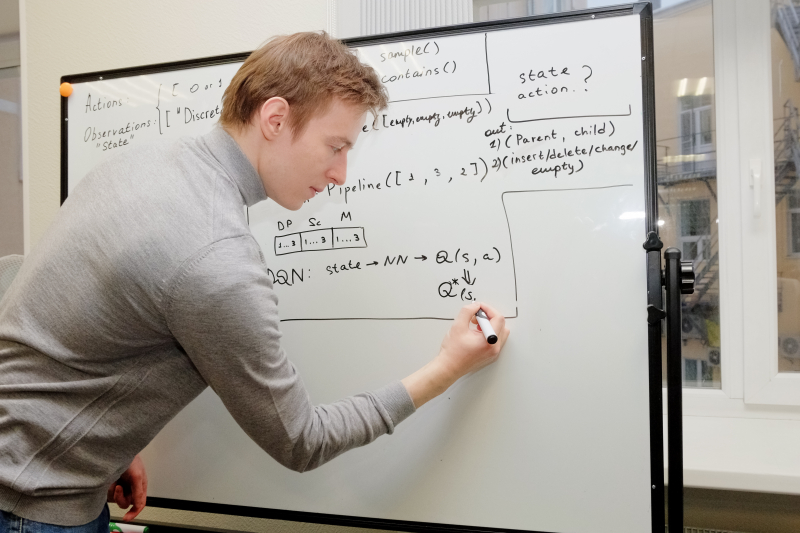
Photo by Ekaterina Shevyreva, ITMO.NEWS
Why is it important?
Differential equations are one of the best ways to describe physical processes. For instance, the Navier–Stokes equations describe the motion of fluid substances. These equations can be used to build a physical model using analytical methods, mathematical apparatus, complex computations that take into account the energy conservation law, and so on. In my project, I am planning to produce such differential equations based only on data.
Specialists in a particular field can tell what is described by a certain differential equation. They can identify the type of the equation and the way the process it describes is similar to other physical systems. This will help better understand this process. This means that such equations can be interpreted, unlike the majority of machine learning methods.
An illustrative case is the data on air pollution. We use it to produce the corresponding equation of change, which helps us identify the source of pollution. This allows us to both model the process and measure the intensity of the source.
Why hasn’t this approach been used before?
The tasks we are working on resemble those from the theory of equations in mathematical physics. In order to tell how well the model describes a process, we need to first solve the differential equations that we get from the algorithm. At the same time, it is clear that many of these will be far from reality, but we will have to solve them first to be able to say that.
However, researchers, for instance, my supervisor Alexander Khvatov, are currently working on neural networks that would be able to solve any given differential equation. So we approach this problem from two sides: I produce the equations and he solves them.
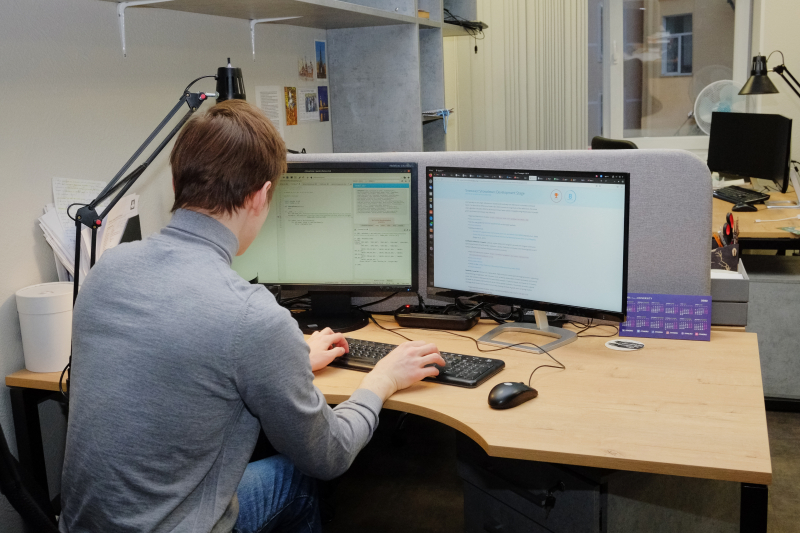
Photo by Ekaterina Shevyreva, ITMO.NEWS
At what stage is your research now?
We are validating the algorithm on the systems for which we already know the correct equation. Right now, we are focusing on the experiments with equations for thermal conductivity in viscous fluids. We measure the temperature and then use the algorithm to identify the equation that describes it. Later, we will use this data to model the physical system. Ideally, we will get a differential equation that would describe only specific measures – the velocity of the way thermal conductivity changes in time and space.
However, there is one challenge that we are trying to solve now: the equation for thermal conductivity with convection includes a function for velocity that describes how this liquid mixes. In many cases we can’t specify other physical parameters apart from the one we are modeling because we don’t have the equipment necessary for it. We are currently developing an algorithm that would help us find this function while searching for the equation.
Are you planning to stay in Russia after you get your PhD?
I will definitely stay here until I defend my thesis and I haven’t made plans for what comes next yet. If I find interesting internships or postdoc positions abroad, then yes, why not. I wouldn’t refuse an opportunity to work with a world-class research center, but it’s not a goal in itself for me.
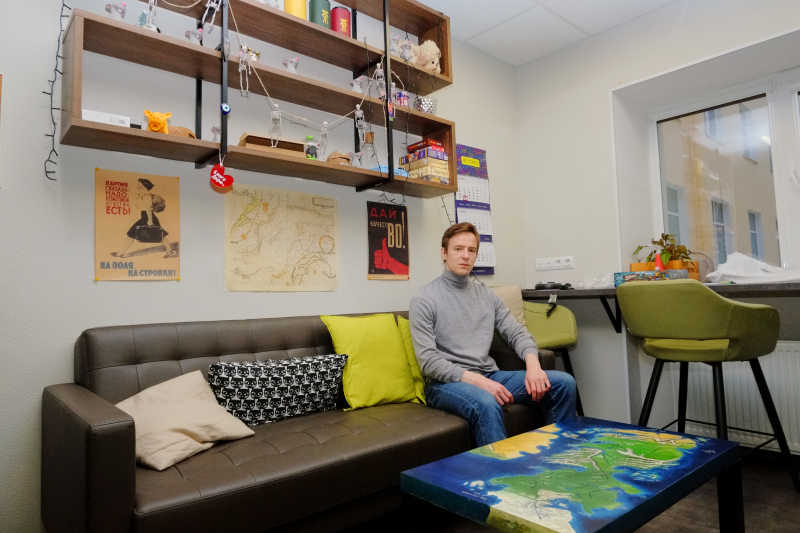
Photo by Ekaterina Shevyreva, ITMO.NEWS
So you don’t hold the opinion that cutting-edge research is only done abroad?
It might be tunnel vision kicking in because I am really focused on the studies done at our lab, but I do think that IT in Russia is doing quite well. People get funding and various other support. For instance, our newly founded lab has already secured two grants, so I don’t think there is a huge problem. However, I can’t say anything about other fields.
Are you satisfied with your position at ITMO?
I am a junior researcher and I am fully employed at the lab. I don’t think I am that different from other scientists, it doesn’t work like that these days. Moreover, our research field is rather young. My group mainly consists of PhD students and recent PhD graduates, so I feel in my element here.





